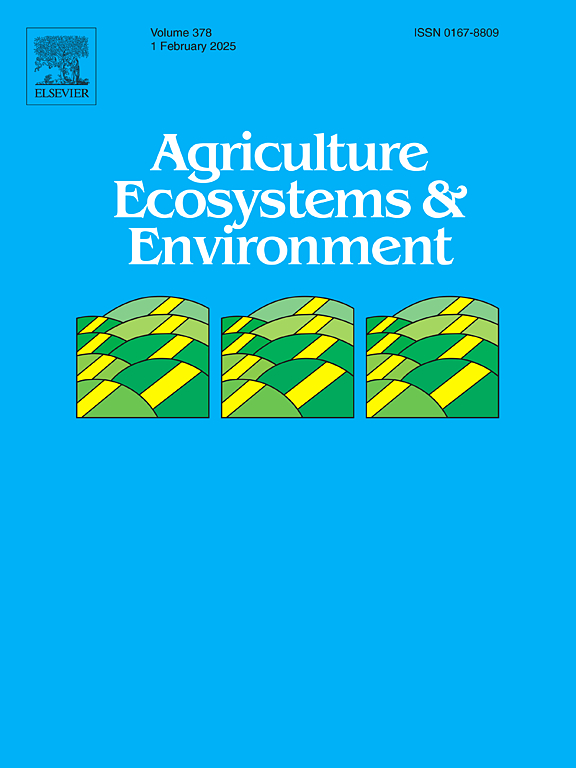Plant species richness of perennial flower strips on arable land is affected by seed diversity, provenance and seeding density
IF 6.4
1区 农林科学
Q1 AGRICULTURE, MULTIDISCIPLINARY
引用次数: 0
Abstract
Land-use intensification has caused drastic declines in the biodiversity of plants and insects in agricultural landscapes. To counteract these losses, the European Union introduced agri-environmental schemes that subsidise the establishment and maintenance of perennial flower strips on arable land. In practice, the large variety of flower strips makes it difficult to monitor their effectiveness, which calls for systematic experiments. This study reports on a field experiment to understand the effects of seed mixture and seeding density on the diversity of sown and unsown plant species. In spring 2020, we set up a field experiment with five seed mixtures differing in diversity, provenance and composition as well as three seed densities. Plant diversity was monitored after one and four years. There were clear effects of the seed mixtures on plant biomass and species richness, while the impact of seeding density was low. The moderately diverse regional mixture resulted in the highest richness; including insect-pollinated species, while the most diverse mixture and high-density seeding showed lowest colonisation by unsown species. Among the commercially available (and thus cheaper) mixtures, the one with lowest diversity performed worst in terms of sown species establishment, species richness and the proportion of unsown plants. Thus, we recommend usage of regional seeds with intermediate diversity at low to moderate seeding density when establishing perennial flower strips and aiming at high plant richness.
耕地多年生花带植物物种丰富度受种子多样性、种源和种子密度的影响
土地利用集约化导致农业景观中植物和昆虫的生物多样性急剧下降。为了抵消这些损失,欧盟推出了农业环境计划,补贴在可耕地上建立和维护多年生花带。在实践中,花条品种繁多,难以监测其效果,这需要系统的实验。本研究通过田间试验,了解种子混合和播种密度对播种和未播种植物物种多样性的影响。2020年春季,我们用五种不同多样性、种源和成分以及三种种子密度的种子混合物进行了田间试验。分别在1年和4年后监测植物多样性。混合种子对植物生物量和物种丰富度有明显的影响,而播种密度的影响较小。中等多样性的区域混合导致最高的丰富度;包括昆虫传粉的物种,而最多样化的混合物和高密度播种表明,未播种的物种的定殖率最低。在市售的(因而更便宜的)混合物中,多样性最低的混合物在播种物种建立、物种丰富度和未播种植物比例方面表现最差。因此,建议在建立多年生花带时,以植物丰富度高为目标,采用低至中等密度、多样性中等的区域种子。
本文章由计算机程序翻译,如有差异,请以英文原文为准。
求助全文
约1分钟内获得全文
求助全文
来源期刊

Agriculture, Ecosystems & Environment
环境科学-环境科学
CiteScore
11.70
自引率
9.10%
发文量
392
审稿时长
26 days
期刊介绍:
Agriculture, Ecosystems and Environment publishes scientific articles dealing with the interface between agroecosystems and the natural environment, specifically how agriculture influences the environment and how changes in that environment impact agroecosystems. Preference is given to papers from experimental and observational research at the field, system or landscape level, from studies that enhance our understanding of processes using data-based biophysical modelling, and papers that bridge scientific disciplines and integrate knowledge. All papers should be placed in an international or wide comparative context.
 求助内容:
求助内容: 应助结果提醒方式:
应助结果提醒方式:


